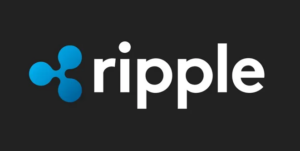Diversification of Pectra Cryptocurrency to Prevent Ethereum’s 2025 Failure

The upcoming Ethereum update, Pectra, has ignited intense discussions within the crypto community. Designed to enhance the network’s efficiency and scalability, this pivotal update may potentially be divided into two parts. Developers are contemplating this bold move to expedite deployment, albeit not without risks. What implications does this split carry for Ethereum’s future, and why is this division deemed crucial to avert potential setbacks?
Ethereum’s development is advancing rapidly, yet the growing complexity of updates leaves little margin for error. Pectra, if delayed or poorly implemented, could significantly impede the network’s progress. Hence, developers have opted for a radical approach: splitting the upgrade into two distinct segments.
The primary reason behind this split is to alleviate pressure on the timeline and enhance the likelihood of success. An Ethereum developer emphasized the urgency to deliver Pectra by June 2025 to avoid failure. The strategy entails launching the first phase by February 2025, an ambitious but necessary deadline to prevent accumulated delays.
Despite its bold nature, this approach allows the gradual deployment of Pectra’s promised features while mitigating the technical risks associated with a simultaneous rollout. After the initial phase is launched, developers can fine-tune and optimize before proceeding with the second phase, offering valuable adaptability in a constantly evolving environment.
The Pectra update amalgamates two significant projects: Prague and Electra. Prague aims to enhance the network’s execution layer, while Electra focuses on the consensus layer. Combining these aspects into a single update is deemed risky, making the split potentially beneficial in lightening the load and ensuring better control over each aspect’s implementation.
However, this strategic decision is not without repercussions. Concerns exist that a split could complicate network governance. Ensuring the smooth and prompt deployment of both phases of Pectra is crucial, as any delays or failures could impact Ethereum’s credibility in the competitive crypto market.
Ethereum stands at a critical juncture with the Pectra update poised to elevate the network’s scalability and efficiency. Nevertheless, the decision to split this update is viewed as a calculated gamble within the crypto sphere. Key developers stress that splitting the update should accelerate delivery, ideally by the first quarter of 2025.
This strategic dilemma underscores the delicate balance between innovation and pragmatism in the evolution of decentralized technologies. While Ethereum must innovate to counter rising competition, overly ambitious update management could lead to setbacks. Despite the complexities, industry optimism persists, with Pectra shaping up to be a transformative update that could reinforce Ethereum’s leadership and pave the way for groundbreaking innovations in cryptocurrency interactions.
The division of Pectra goes beyond technical adjustments; it represents a strategic maneuver aimed at sustaining Ethereum’s momentum while minimizing risks. The outcome of this approach in 2025 remains to be seen.




